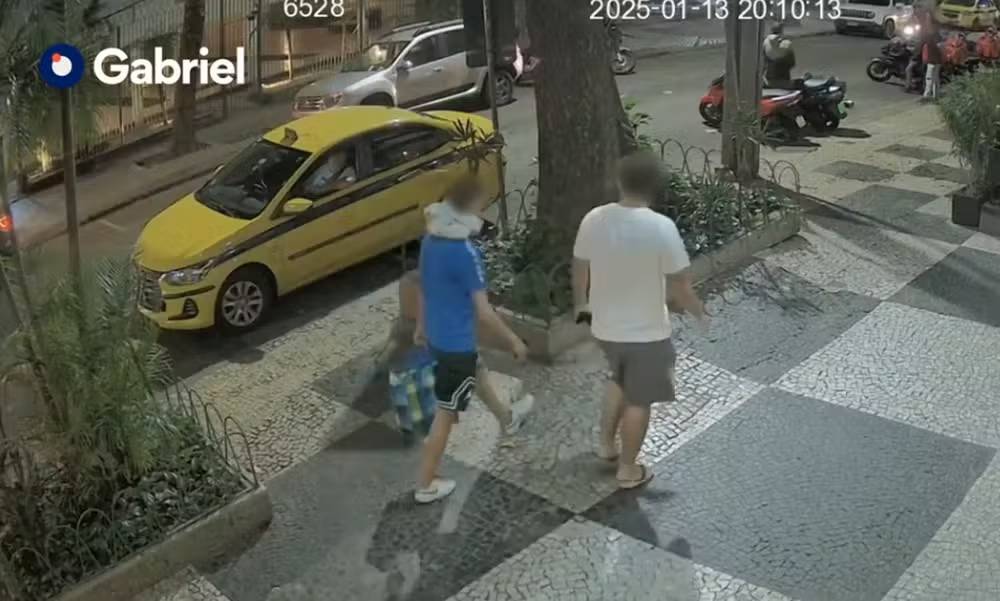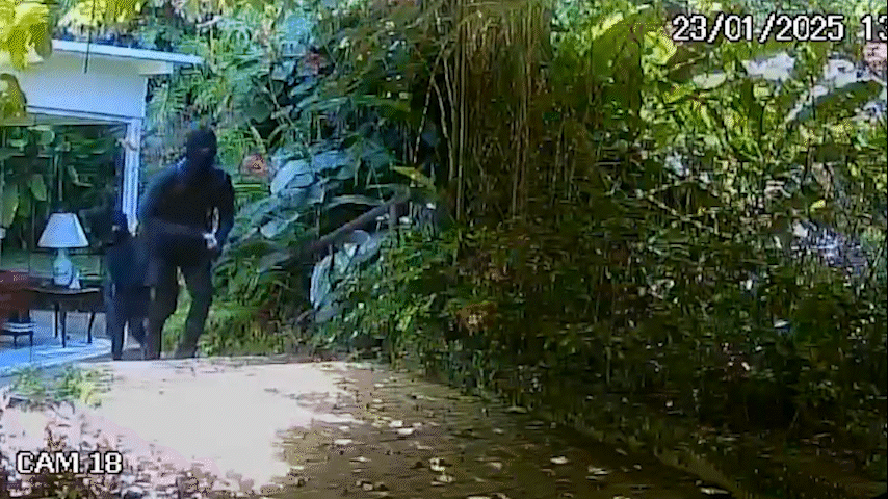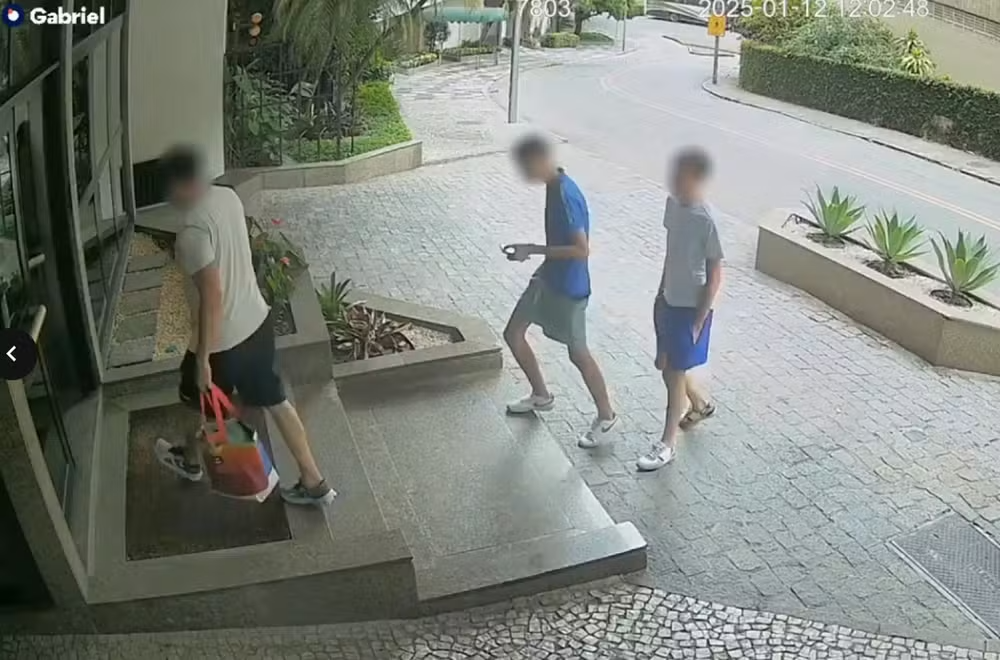SUMMARY
Home robberies in Rio de Janeiro’s South Zone have surged, with a 50% increase in incidents in 2024 compared to the previous year. Criminal gangs use sophisticated tactics such as social engineering and insider intelligence to target high-end apartments and luxury homes. Some gangs focus on stealthy burglaries, while others execute violent home invasions. Police have intensified operations, leading to the identification and arrest of multiple suspects, but challenges remain. Criminals frequently change tactics, exploit weak security measures, and collaborate with local factions to evade law enforcement.
Recent Cases
On the afternoon of Saturday, 11 January, at around 15:00, a young man knocks on the door of a condominium in Copacabana, in the South Zone of Rio de Janeiro. He speaks to an employee and manages to enter the building. Shortly after, he takes the elevator up and then leaves. Upon returning, he brings an accomplice. Less than 20 minutes later, the pair exited the premises carrying a carry-on bag filled with jewelry worth R$600,000.
The following afternoon, two young men attempt to enter a gated condominium in Leblon but fail and leave. On 13 January, at around 17:00, another suspect gained access to a condominium in the same neighborhood without difficulty, accompanied by a man pretending to be a passerby. Nearly three hours later, the intruder is seen leaving with a bag containing more stolen jewelry.

This is the modus operandi of a gang specialized in burglarizing high-end apartments in the South Zone of Rio. Security camera footage helped the Civil Police identify at least 12 members of the criminal organization, originally from São Paulo. Following investigations by the 15th Police Precinct (Gávea), four members of the group were arrested last Saturday in Campina Grande do Sul, Paraná. In addition to Rio de Janeiro, the gang operates in several states across the country.
Crime Data in South Zone
In 2024, the number of home robberies in Rio de Janeiro’s South Zone increased by 50% compared to the same period in 2023, rising from 50 to 75 incidents. Data from the Public Security Institute (ISP) indicates that some areas experienced even sharper increases. In the area under the responsibility of the 2nd Military Police Battalion (BPM), which covers Botafogo, cases more than doubled, jumping from 9 to 20. In the 19th BPM, responsible for Copacabana, incidents surged by 72%, increasing from 22 to 38. The only exception was the 23rd BPM, which covers Leblon, where home robberies declined slightly by 5%, from 19 to 18 cases.
When analyzing the three neighborhoods together, April recorded the highest number of incidents, with five cases reported. The data also shows that the most frequent days for these crimes were Tuesday, Friday, and Saturday, particularly during the early morning hours.

In contrast, the overall trend across the state of Rio de Janeiro was the opposite. During the same period, home burglaries decreased by 20% statewide, dropping from 919 cases in 2023 to 737 in 2024. While the South Zone saw a troubling rise in criminal activity, the rest of the state benefited from an overall decline, highlighting a regional security imbalance that demands targeted interventions.
Profile of the Gangs and Their Tactics
The criminal gang identified by the Civil Police consists of at least 12 young individuals, aged between 18 and 22, some of whom are minors. They reside in Brás, a neighborhood in São Paulo’s capital, but frequently travel across Brazil, targeting upscale neighborhoods in major cities. To avoid detection, they rotate their roles in the break-ins, especially after a high-profile case in Jardim Botânico gained widespread attention. They arrive at their targets already knowing residents’ names, surnames, and full addresses. Most members are tall white men, dressed casually in shorts and branded t-shirts, often wearing flip-flops or sandals. Occasionally, they carry a long-neck beer bottle, blending in as they stroll through the streets.
One of the gang members specializes in gathering intelligence using publicly available online data. For example, they research lists of BMW or other luxury car owners in Leblon. By checking license plate records, they identify the owners’ neighborhoods and filter for the most affluent targets. This information helps them compile names and addresses to plan their break-ins.
The crimes typically occur during the Summer and long weekends when many residents are on vacation, leaving their apartments unoccupied. The burglaries are usually carried out in pairs—either a young man and woman posing as a couple or two young men. They arrive in the area by car, park a few streets away, and then casually walk to their target building. They loiter in front of the entrance, sometimes leaning against the gate to appear natural.
Using gathered information, they claim to be relatives of a resident—such as the nephew of “Mr. So-and-So from apartment 501″—and often convince the doorman to grant access. Many residents have a habit of arguing with doormen who deny entry to family members or friends, which pressures them to be more lenient in these situations.
Once inside, they roam the building, knocking on apartment doors. If no one answers, they force an entry with a screwdriver. Their targets include jewelry, watches, and designer handbags, avoiding electronic devices that can be easily tracked. Meanwhile, a lookout walks on the opposite side of the street, maintaining surveillance. In at least two incidents, he was seen drinking from a long-neck beer bottle and wearing flip-flops to blend in.
Additionally, the gang collaborates with drug traffickers from Vila Vintém, in Padre Miguel, in Rio’s West Zone. In some cases, stolen goods are sold directly to the traffickers, who pay in cash and provide temporary shelter in exchange for a percentage of the profits. After their operations in Rio, the group either returns to São Paulo or moves on to other major cities.
Violent and Organized: A Different Type of Home Invasions
Another, more aggressive method has also gained ground in Rio’s South Zone, complementing the discreet tactics previously described. While some gangs rely on low-profile burglaries using social engineering, others adopt violent and coordinated approaches. Both models have intensified in recent years, exposing the growing complexity of residential crime and demanding tailored yet integrated responses.
This more violent method is carried out by specialized criminal gangs that carefully study their targets in advance, monitoring the victims’ routines, the presence of security personnel, and the overall protection level of the properties. In many cases, there are indications that they rely on insider information from domestic workers or people close to the victims. When they strike, they use heavy weaponry, act in a coordinated manner, and do not hesitate to use violence.

This was the case with the robbery at the home of Botafogo’s president, João Paulo Magalhães, which took place on 23 January of this year. Three armed criminals, dressed in black shirts and wearing hoods, invaded the luxury residence during the day, using a forested area to access the property. They overpowered, tied up, assaulted, and tortured the house’s security guard before escaping with two weapons: a pistol belonging to the guard and a rifle owned by the homeowner. The entire operation lasted just three minutes but demonstrated a high level of organization.
One of the criminals involved, Claudevan Santos da Silva Filho, was arrested on 19 February during an operation by the 10th Police Precinct (Botafogo) in the Fallet-Fogueteiro community in Santa Teresa, central Rio. He and two other suspects are accused of being part of a gang specializing in robbing luxury homes in the city’s South Zone. This case highlights how these criminal groups operate with a high degree of planning and sophistication, exposing the vulnerabilities of wealthy neighborhoods.
Security Challenges
In response to the surge in home robberies across Rio’s South Zone, law enforcement has intensified operations, leading to the identification and arrest of several gang members. Security camera footage and intelligence gathering have played a crucial role in tracking suspects and understanding their methods. The arrest of criminals involved in those burglaries and home invasions shows the complexity of these crimes and the need for a new security strategy.
Despite these efforts, authorities face persistent challenges in controlling the escalation of these crimes. Many gangs operate with agility, frequently rotating members and adjusting tactics to evade detection. A key vulnerability is the ease with which criminals gain access to residential buildings, often exploiting social engineering, security loopholes, or insider assistance. In many cases, well-dressed criminals posing as relatives or acquaintances manipulate doormen into granting entry, taking advantage of weak verification protocols and the reluctance of residents to comply with stricter security measures.
To address these security concerns, a combination of enhanced policing efforts and preventive measures is essential. One of the activities in which INTERLIRA specializes is vulnerability analysis of premises, including residential properties. To carry out these analyses, we evaluate the existing physical, electronic, and human security measures, as well as the associated procedures. In most cases, the score given to procedures and the training of human resources does not exceed 50%, highlighting a lack of preparation of the people and this factor weakness is often the most exploited by criminals.Residents and condominium administrators must reinforce security protocols through stricter visitor verification systems, requiring real-time authorization before granting access. Staff, particularly doormen and security personnel, should be properly trained to identify suspicious behavior and enforce rules consistently. A cultural shift is crucial—residents must support, not challenge, security measures, as tenant pressure often leads to breaches.




